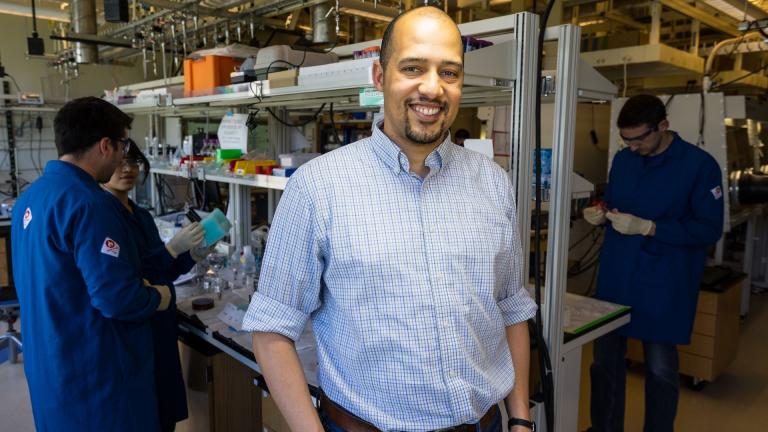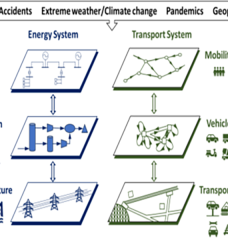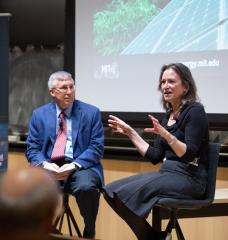
Before Fikile Brushett wanted to be an engineer, he wanted to be a soccer player. Today, however, Brushett is the Cecil and Ida Green Career Development Associate Professor in the Department of Chemical Engineering. Building 66 might not look much like a soccer field, but Brushett says the sport taught him a fundamental lesson that has proved invaluable in his scientific endeavors.
“The teams that are successful are the teams that work together,” Brushett says.
That philosophy inspires the Brushett Research Group, which draws on disciplines as diverse as organic chemistry and economics to create new electrochemical processes and devices.
As the world moves toward cleaner and sustainable sources of energy, one of the major challenges is converting efficiently between electrical and chemical energy. This is the challenge undertaken by Brushett and his colleagues, who are trying to push the frontiers of electrochemical technology.
Brushett’s research focuses on ways to improve redox flow batteries, which are potentially low-cost alternatives to conventional batteries and a viable way of storing energy from renewable sources like wind and the sun. His group also explores means to recycle carbon dioxide — a greenhouse gas — into fuels and useful chemicals, and to extract energy from biomass.
In his work, Brushett is helping to transform every stage of the energy pipeline: from unlocking the potential of solar and wind energy to replacing combustion engines with fuel cells, and even enabling greener industrial processes.
“A lot of times, electrochemical technologies work in some areas, but we'd like them to work much more broadly than we've asked them to do beforehand,” Brushett says. “A lot of that is now driving the need for new innovation in the area, and that's where we come in.”






